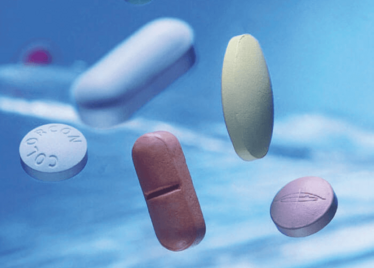
Speed and Simplicity – A Formulator’s Best Friend in Development
From core to coating, there is a lot to consider when it comes to developing and optimizing a solid dosage formulation. Simple best practices can offer an edge that allows formulators to reduce potential problems that could occur in later stage commercial manufacturing.
Jayesh Parmar |
sponsored by Colorcon
Formulators are faced with many choices during the early phase of development, and they must focus on the project milestones they need to deliver. Examining formulation strategy early can deliver key benefits and having an end goal in mind early on leads to greater efficiency, as everyone will understand what they are working towards. Understanding the molecule is the first step, then exploring the needs and options for formulation enables development to progress faster and smoother.
Solubility is one issue that is often encountered with new molecules in development. Many technologies are available to help solubilize an API; however, if a robust formulation and process is not developed then it can impact the subsequent manufacturing of a consistent product. Using the right technology and choice of excipients, it’s possible to develop a stable formulation with reduced complexity. Partnership with key suppliers of ingredients and equipment is critical during development phase. For example, formulators need to ensure that the process parameters for equipment used during development are transferrable to commercial-scale equipment. Similarly, formulators should partner with suppliers before putting in place any particular specifications for ingredients; thus avoiding future supply issues.

Formulation simplification
Designing the formulation for your next new product involves many decisions. What is the desired drug release profile? What excipients should be used? Do they interact with the API? Which film coating should be used? And how should the tablet design look? Drug developers also need to consider what will work at the commercial manufacturing scale. Generally, I recommend formulators to keep their strategy simple; by reducing ingredients and process steps this is less likely to cause problems and results in the most cost-effective option. From a regulatory standpoint, complex processes are also more likely to lead to complex questions from regulators and may extend the approval process.
Process efficiency
In the very early stage of formulation, a capsule is generally the preferred oral dosage form, due to its binding capability for clinical trials. However, due to economic, ease of manufacturing and marketing considerations, most oral solid dosage forms on the market today are tablets. There can be a great opportunity for cost and time savings, as formulators can develop a dosage that works both in a capsule and as a final tablet form.
Direct compression is considered by many in the industry to be one of the simplest methods for manufacturing tablets and works well at large manufacturing scales. In comparison, wet granulation involves multiple steps and the use of moisture, which can introduce the risk that the API may degrade. With industry preference leaning towards direct compression, several excipients have been developed that excel in this area. As one example, consider our newest excipient, StarTab directly compressible starch. StarTab is designed specifically for direct compression and offers benefits in terms of both simplifying the formulation and processing. Starch excipients are commonplace in the industry, but many require additional ingredients to be fully effective in the formulation – such as an excipient to improve flow, an excipient to improve compressibility, as well as superdisintegrants. This can complicate the formulation and process, given that you need to examine how all of the excipients interact with one another, as well as interact with the API; lactose, for example, is one common formulation ingredient that can interact with certain types of API, so it is best avoided. StarTab is a single excipient which, because of its particle shape and size, is directly compressible and provides improved flow during manufacture. It can also avoid the use of superdisintegrants – and be used at both small scale and large scale, as well as with the latest technology such as continuous processing. Excipients like this offer manufacturers significant flexibility in terms of how they manufacture their product.
Other excipients can help with productivity, such as METHOCEL DC2, which also enables manufacturers to replace costly wet granulation in matrix tablet production with more cost-effective dry granulation and direct compression techniques. It is a pure, compendial hypromellose (HPMC) and the most flowable direct compression grade of HPMC available today. It exhibits better flow in formulation blends compared to traditional hypromellose-based formulations, and uniform die-fill during tablet manufacturing provides tighter tablet weight control. Overall, it can improve process capability.
Another important formulation decision revolves around API stability, which can be improved through the correct choice of film coating. Whilst film coatings have an important role to play for aesthetic purposes by giving the tablet a perfect finish, they also play a part in defining branding strategies. They also fulfil more practical roles; a good coating protects the tablet during storage from moisture, light and oxygen, for example, and helps to stabilize the API. The right coating choice also enables ease of transition of drug production between manufacturing sites; in early stage development the final site(s) for manufacture is not usually a consideration. Colorcon’s Opadry QX has a wide processing latitude which means it is suitable for use across a range of coating equipment – which is imperative if you don’t know where the final product will ultimately be manufactured. Specialist film coatings also provide a barrier that reduces the ingress of moisture to the tablet core, helping to support stability for sensitive actives. And lets not forget, film coating also helps tablets to run smoother in tabletting equipment and protects them from damage during the manufacturing process.

Right first time
Failing to consider core and coating formulation early on can lead to delays, added costs and, in the worst-case scenario, project termination. Often, big pharma companies understand the benefits of investing in early formulation and will have large departments dedicated to this role, but many others, particularly small and medium-size companies, may not have the resources and, understandably, will be prioritizing proving efficacy and safety of the API. In many instances, rather than developing an optimized formulation strategy, a company will simply resort to the same tried and tested approach that they have used for their previous products, even though it might not be best matched with the newest molecule. At other times, a company may want to take a new approach to optimize the formulation but struggle to find a starting point, since there are many options!
Companies do not need to go through the formulation process alone; Colorcon offers its HyperStart starting formulation service globally to help bench scientists understand the options available for delivering their API to the patient. We simply take basic information (confidentially, of course) related to the API, such as solubility, the dosage, and the technology being considered for the final dosage form, and then deliver back a starting formulation. Some companies already have good starting guidelines in this area, but what worked for one formulation may not be the best starting point for the next. Our service supports scientists to make decisions early, giving them an informed starting point.
In my view, vendors have an obligation to support on the regulatory side too with documentation. When it comes to excipients and ingredients, it can be surprising how regulations across the world differ; what is allowed in the US may not be allowed in Japan, for example. This can also apply to certain pigments – and it wouldn’t be the first time I’ve come across a company shocked to learn that their manufactured tablet in one country can’t be marketed in another without changing the ingredients! Having this information early allows you to plan early and choose ingredients accepted in all the countries you are targeting for market launch.
Although attrition in drug development is high, considering the formulation in the early development stages will definitely lay the foundations to support clinical success, and good formulation expertise can make all the difference.
General Manager at Colorcon.



















